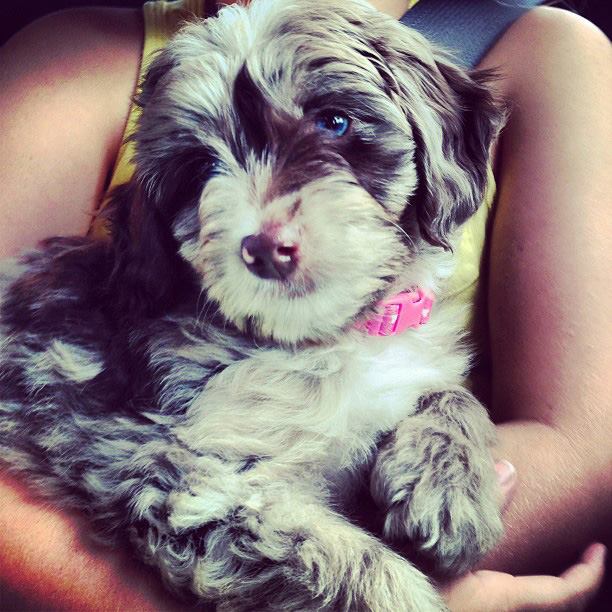

One of the most common questions new puppy owners ask is, “How big will my puppy get?”
The best way to predict your puppy’s full-grown weight is by looking at its parents. If both parents are similar in size, your puppy will likely fall within that range. However, if one parent is a mini and the other is a medium, the puppy’s size could land anywhere between—or take after one parent more than the other. Asking your breeder about past litters from the same parents can also provide valuable insight.
Below, you’ll find helpful Puppy Growth Charts, links to Puppy Weight Calculators, and simple formulas to estimate your puppy’s adult size.
Unofficial Puppy to Adult Size Formulas:
Two easy formulas to remember are FOUR FOLD and DOUBLE UP.
- Double Up: Generally, an adult dog weighs about twice as much as it did when it was 4 months old; giant breeds will double what they weighed at 5 months.
- Four Fold: Another easy formula for predicting adult weight: Puppies’ weight at 8 weeks is about a quarter of what they will weigh as adults.
Considering the factors above, you can make a good guess at your puppy’s weight at maturity.

Puppy Weight Calculators
I’ve found some of these puppy weight calculators to be ehh.. not always super correct but still fun to try.
Puppy Growth Chart
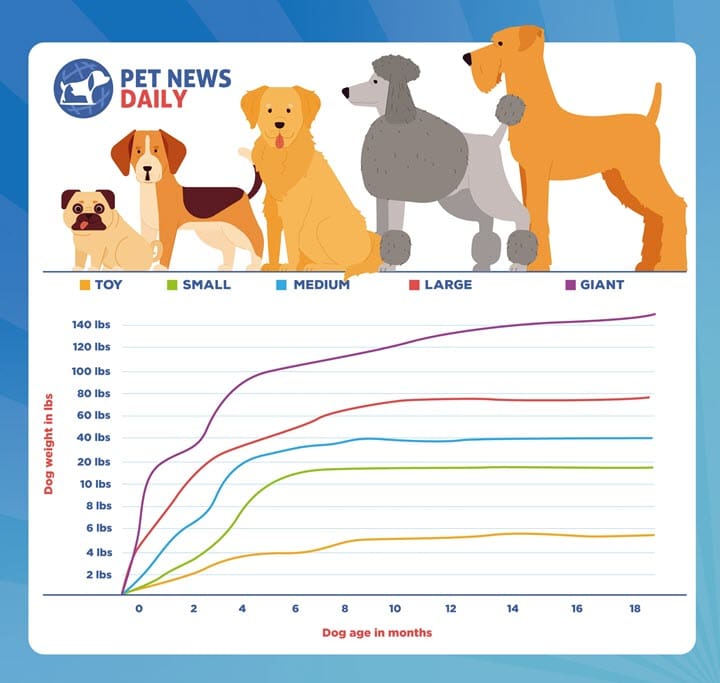
Puppy Feeding Chart
| Weight Range | Feeding Amount Per Day: 1–3 Months Old | Feeding Amount Per Day: 7–12 Months Old |
|---|---|---|
| 6–10 pounds | 1–1½ cups | ½–¾ cup |
| 11–20 pounds | 1½–2½ cups | ¾–1¼ cups |
| 21–40 pounds | 2½–4¼ cups | 1¼–2¼ cups |
| 41–60 pounds | 4¼–5¾ cups | 2¼–3 cups |
Body Condition Score Explained
The Body Condition Score (BCS) is measured on a scale from 1 to 9, with 1 indicating extreme underweight and 9 indicating severe obesity.
The ideal range for a healthy dog is between 4 and 5.
Dogs scoring 1-2 or above 7 should see a veterinarian as soon as possible, as they may be at risk for serious health issues. If your dog falls into these ranges, avoid making drastic dietary changes and seek professional guidance.
A simple way to assess your dog’s body condition is by looking down at them while they are standing—you should be able to see a defined waist.
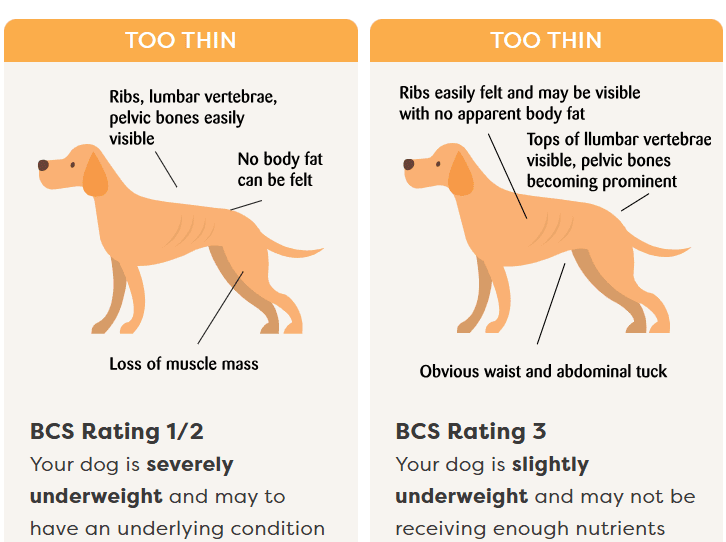
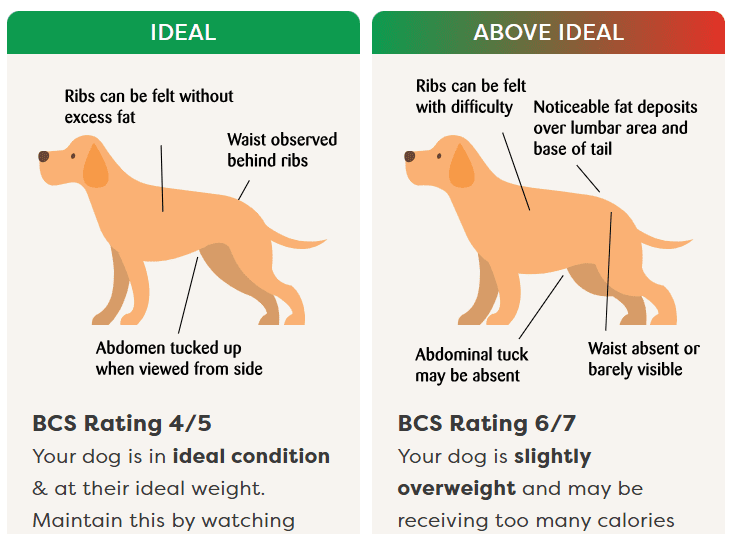
Body Condition Examples
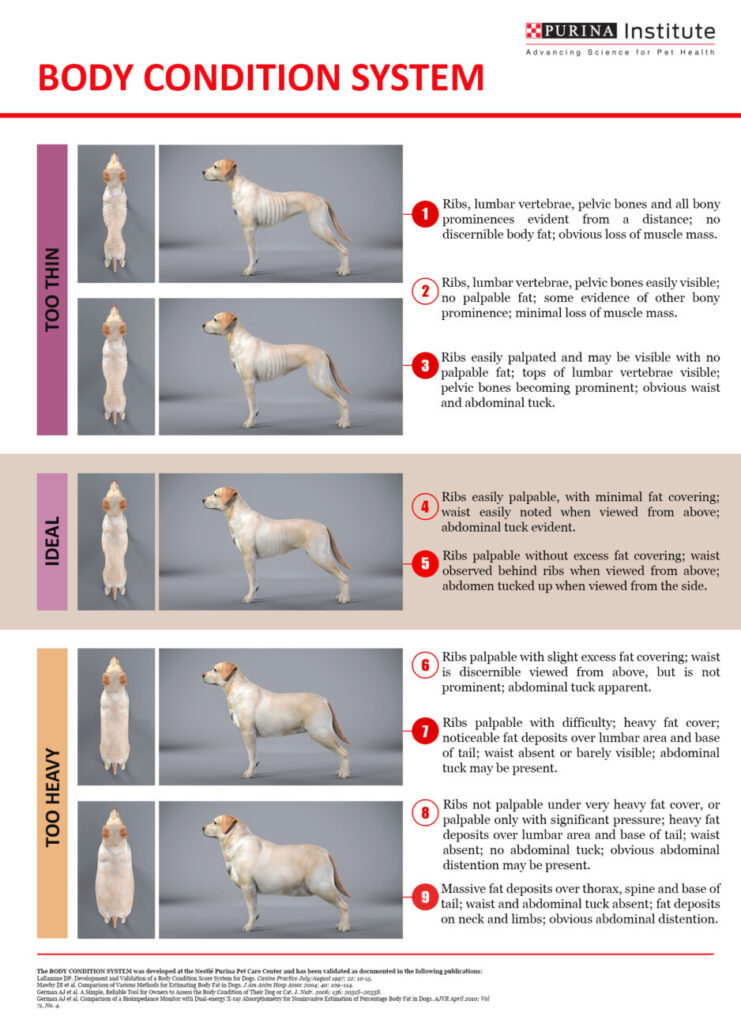
Pet Obesity Prevention
According to the Association for Pet Obesity Prevention, nearly 59% of dogs are classified as overweight or obese. Despite this, about one-third of American pet owners with overweight or obese dogs still believe their pets are within a “normal” weight range.
This misconception can lead to serious health risks, making it essential to regularly assess their dog’s body condition and to consult a veterinarian if needed.
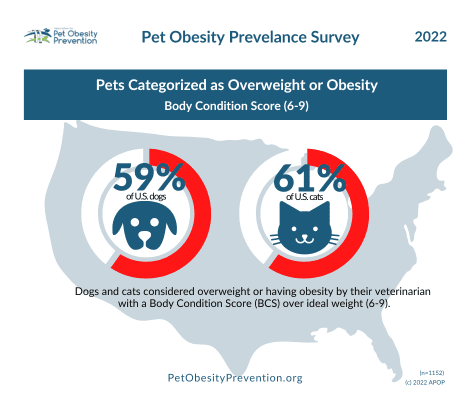
Puppy to Adult Weight Prediction Methods by Breed Size
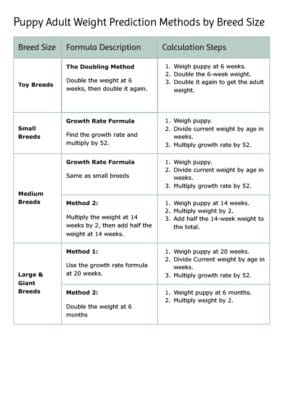
Breed Size and Age of Maturity
Typically, dog breeds are split into five categories by size: toy, small, medium, large, and giant. It’s not an exact science, and many breeds will have some overlap.
| Breed Size | Weight | Maturity Age |
|---|---|---|
| Toy | up to 12 lbs | 9 – 12 Months |
| Small | 12 – 25 lbs | 9 – 12 Months |
| Medium | 25 – 50 lbs | 9 – 12 Months |
| Large | 50 – 100 lbs | 18 Months – 2 Years |
| Giant | Over 100 lbs | 2 – 3 Years |
Australian Labradoodle Size Examples
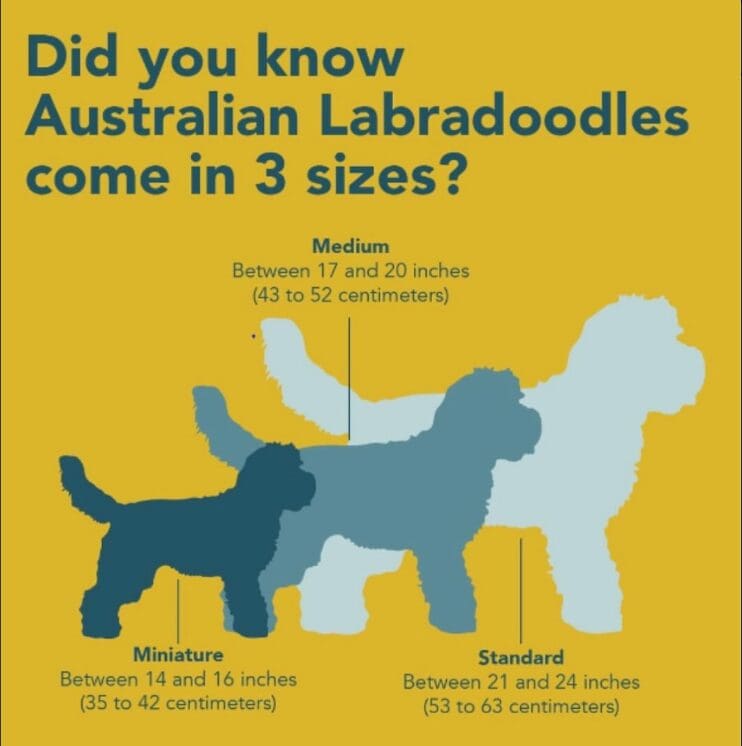

Dreamydoodles, in 3 sizes!
Puppy Weight By Breed: Factors that Impact Growth by Breed
Toy Breeds
- Chihuahuas will generally not exceed 6 lbs. 1 – For more, see our Chihuahua Growth Chart
- Maltese will usually be under 7 lbs. 2
- Toy Poodles will be between 4 and 6 lbs. 3
Small Breeds
- Standard Dachshunds will grow to be between 16 and 32 lbs. 4
- French Bulldogs will be under 28 lbs. 5
- Pugs will usually be between 14 and 18 lbs. 6
Medium Breeds
- Border Collies will often grow to be 30 to 55 lbs. 7
- Goldendoodle (medium) typically weighs 36 to 50 lbs. 8 – For more, see our Goldendoodle Growth Chart
- Siberian Huskies will usually be 35 to 60 lbs. 9
- Dalmatians will often be between 45 and 70 lbs. 10




